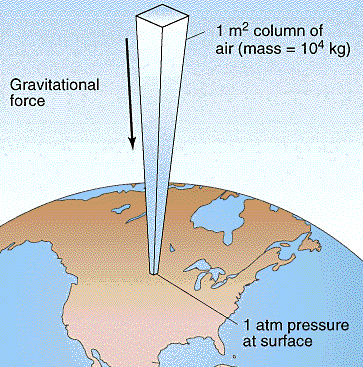
As I was driving home from my tennis match this weekend, a strange phenomenon occurred in my back seat. My water bottle began making a weird noise, and it sounded as if air was trying to escape from it. In a sense, that is kind of what was going on. I thought about why the noise was being made, and it occurred to me that, with the use of my physics knowledge of fluid mechanics, that as I was driving up the mountain, the atmospheric pressure was decreasing. However, the air inside my water bottle was still at the ground level's atmospheric pressure. Therefore, there was a greater pressure inside my water bottle than outside, causing the air from inside to flow out. This can even be expressed in bernoulli's equation. As I go up the mountain, my PE goes up, meaning that air pressure at higher elevations must be lower than air pressure at ground level.

